Last week, in Weekend Wings #37, we looked at the genesis of the F-111 Aardvark and the advanced technologies that had to be developed in order for it to fulfil its very demanding specification.
Those technologies proved dauntingly difficult to integrate into a single airframe. The first years of service of the F-111 were to be plagued with all sorts of problems – and, tragically, the loss of several lives as a result.
In creating the F-111, the [General Dynamics] design team were attempting a major step forward in aircraft capability. Even without the US Navy’s F-111B interceptor requirement, the specification would have challenged any aircraft design team in the world. A few aircraft projects seem to lead charmed lives, with the production hardware proving trouble-free and amply meeting performance requirements laid down in the specification. In most cases, technical troubles result in problems for the designers, but these are usually sorted out, and the production aircraft meets most of its specification. In the case of the F-111, the competence of the designers could not be questioned, but everything seemed to go wrong with the end product-structure, inlets, engine and avionics all displayed problems and required costly redesign, while some of the original and admittedly over-ambitious performance goals were never attained.
Given the wisdom of hindsight, it is easy to see that the production programme was mishandled. Instead of terminating F-111A production as soon as the problems inherent in the basic design had been identified, returning the programme to the engineering development phase until an improved and definitive design could be created, the USAF purchased a series of versions. Each may have been superior to the version it replaced on the Fort Worth production line, but the end result was that all versions were ordered in small numbers, eliminating the savings which could have accrued from mass production and giving the USAF a severe logistical problem. A programme originally expected to result in the construction of more than 1,700 aircraft at a unit cost of $3.4 million each, shrunk to an emasculated 562 aircraft production run between 1967 and 1976.
. . .
This piecemeal approach to production resulted in high cost. Unit cost of the final F-111F version was $13.5 million.
The prototype F-111A (the Air Force strike version) first flew on December 21st, 1964. Initial flights were promising, but as discussed last week, there were enormous problems in getting all of the highly advanced components, systems and technologies to work together. Integration was complicated by Defense Secretary Robert McNamara‘s insistence that, in order to save time and money, development and ‘debugging’ should proceed in tandem with initial production efforts. Nothing of comparable complexity had ever before been attempted in the aerospace industry – indeed, comparisons were made to the contemporary Apollo space program in terms of similar levels of difficulty, and pressure to bring the craft to operational status.
Furthermore, the US Navy (with aircraft carrier operations in mind) had specified a maximum aircraft length of 55 feet, and (most important of all) a maximum weight of no more than 50,000 pounds, for its F-111B model. This was critically important. The arresting gear fitted to US aircraft carriers had to decelerate heavily-laden aircraft from flying speed to a standstill in no more than 300-400 feet of flight deck space. The gear had to absorb all the kinetic energy of the aircraft, which could be very high. (For example, the current Mark 7 Mod 3 arresting gear on USN Nimitz-class carriers can stop an aircraft weighing 50,000 pounds, traveling at a speed of 130 knots, in a distance of only 340 feet. That means absorbing kinetic energy of well over 45,000,000 [forty-five million] foot-pounds.)
Unfortunately, McNamara’s perspective was that of a businessman and statistician, not a pilot or aircraft carrier captain. He arbitrarily raised the Navy’s weight limit to 55,000 pounds (without considering what effect this would have on carrier landings), and accepted the Air Force’s requirement for a weight of 60,000 pounds. McNamara ordered the USAF to take the lead in developing its version of the aircraft, the F-111A, with a proposed length of 70 feet. Grumman was tasked with the responsibility of ‘trimming’ both weight and length from the ‘A’ model to produce the Navy’s F-111B model. McNamara insisted that both versions had to use as many common components, structures and systems as possible.
The Navy required the airframe to stand up to the stress of carrier landings and flight deck operations, a far more demanding environment than any land-based airfield. Because of the emphasis on commonality, the much stronger (and therefore heavier) airframe needed for this purpose was also used for the USAF version of the plane, making the F-111A unnecessarily heavy for airfield operations. The ‘A’ model also retained the tailhook (for use with flight deck arresting gear) of the ‘B’ model, which the USAF had not specified as a requirement. Nevertheless, this was to prove useful in service. Several F-111’s were able to use it to make emergency landings at airfields equipped with arresting gear. For example, in the video clip below, a Royal Australian Air Force (RAAF) F-111 makes a belly landing, using its tailhook, after losing a wheel on take-off.
A longer, much more detailed video clip of this incident may be viewed here.
Another fortuitous ‘cross-over’ was that the Navy F-111B had larger wings (3½ feet longer) than the USAF’s F-111A, increasing the wing area to reduce wing loading, thereby permitting slower landing speeds for carrier operations, and increasing internal fuel capacity to extend the aircraft’s range and loiter time on patrol. The ‘B’ wing was subsequently used for some later Air Force versions of the F-111 (and Australia’s ‘C’ models), conferring those same advantages.
Unfortunately, the Navy version of the plane was overweight from the start, thanks to McNamara’s arbitrary 10% increase of its weight limit. It didn’t take long before even this was exceeded. In December 1963 General Dynamics informed the Pentagon that the ‘B’ model was already more than 5,000 pounds over the revised weight limit. The Navy’s Bureau of Weapons pointed out that the F-111B was now more than 10,000 pounds, or more than 20%, above its originally specified maximum weight – impossibly high for carrier operations. The Bureau called for an immediate redesign of the F-111B to solve this problem, but McNamara overrode it. His political reputation was now inextricably linked to the F-111 program, and he could not afford to ‘upset the applecart’. He ordered the program to continue, hoping that General Dynamics and Grumman could solve the problem as development progressed.
Grumman never succeeded in dropping sufficient weight from from the F-111B design. Three ‘heavy’ prototypes were built, followed by two ‘light’ versions with reduced airframe weight. Unfortunately, as mentioned last week, the ‘heavy’ prototypes had flown with ejection seats, not the crew escape capsule or pod that was being designed for all versions of the F-111. When the latter had been fully developed, it proved to add more weight to the F-111 than had been saved by Grumman’s fuselage modifications, nullifying their effect. Furthermore, while the empty weight of the aircraft was trimmed to below the Navy’s original specification, this did not allow for fuel, armament or crew. When these were added, the weight exploded to far above specification.
Further problems were experienced with the Pratt & Whitney TF-30 turbofan engines being developed for the F-111. Their power output was insufficient for the overweight airframe, leading to demands for more thrust. This would be provided in later versions of the engine, but these would not be ready in time for the initial production versions of the aircraft. Furthermore, the air intake design of the F-111 had been based on the designers’ knowledge of earlier turbojet engines, which (as discussed last week) had very different characteristics to turbofans. As a result, compressor stalls and even flameouts were a constant problem for early versions of the F-111. The air intakes went through several design iterations before the final version, known as ‘Triple Plow II’, entered service.
The prototype F-111B first flew on May 18th, 1965. It was still grossly overweight for the Navy’s requirements, which had by now been reinforced by operational experience during the Vietnam War. The Navy had become convinced that their new fighter had to be able to ‘dogfight’ – perform high-speed, high-stress maneuvers in air-to-air combat with enemy fighters. They wanted the F-111B to improve on the performance of the McDonnell Douglas F-4 Phantom II, but this could not be achieved. The F-111B was a much bigger and heavier aircraft, meaning that its engines simply could not produce enough thrust to give it the agility the Navy wanted. During a Senate inquiry, the Deputy Chief of Naval Operations for Air Warfare, Vice Admiral Thomas F. Connolly, was asked whether more powerful engines would improve the F-111B’s performance to acceptable levels. He replied, “There isn’t enough power in all Christendom to make that airplane what we want!”
The first production models of the F-111A were delivered to the USAF on July 18th, 1967. Significant problems were experienced in bringing the aircraft into squadron service, its complexity proving a nightmare to maintenance crews who’d never before had to make so many disparate systems work together. At the same time, problems with the F-111B version were coming to a head. In its final pre-production form, its empty weight (with no fuel, armament or crew on board) was 46,000 pounds. Loaded weight had ballooned to no less than 79,000 pounds, with maximum take-off weight set at 88,000 pounds – 76% greater than the US Navy’s originally-specified weight limit. Despite McNamara’s insistence that the F-111B continue development, the Navy realized that it would never be suitable for its requirements. As early as 1966, it asked Grumman to begin design studies for a successor to the program.
McNamara’s political career was doomed by many elements (not least the groundswell of opposition to the Vietnam War), but particularly by the problems of the F-111 program, which he’d made a cornerstone of his policies. He resigned as Secretary of Defense on February 29th, 1968, and almost immediately Congress decreed the end of the F-111B (although allowing the USAF’s F-111A to continue in production). One of the F-111B prototypes conducted successful trials aboard the USS Coral Sea in July 1968 (shown in the three photographs and video clip below). However, success was only achieved by having the aircraft carry no weapons at all, and load minimum fuel, to save weight. Immediately after completion of the trials, the F-111B program was terminated.
Only seven F-111B’s were delivered: three prototypes with the original ‘heavy’ airframe, two with a ‘lightened’ airframe, and two pre-production models. The only surviving F-111B (shown below) is today stored in a very dilapidated condition at the China Lake Naval Air Station.
As an aircraft enthusiast, I’d love to see it restored for display at the National Naval Aviation Museum in Pensacola, Florida . . . but that’s unlikely, given budgetary realities. It’s a sad end to what might have been.
(Of course, the F-111B program was a vital stepping-stone in the development of Grumman’s highly successful F-14 Tomcat fighter, shown below.
Grumman began the design of this aircraft even before the cancellation of the F-111B, building into it all they’d learned from the latter program. The F-14 also carried the radar and missiles originally intended for the F-111B.)
While the F-111B program was winding down, in March 1968 several USAF F-111A’s were dispatched to Thailand for operational evaluation under war conditions, in a program named Combat Lancer.
The detachment demonstrated excellent bombing accuracy, and as far as is known no aircraft were lost to enemy action. However, three crashed during operations, revealing significant structural problems.
F-111A 66-0017 was descending from 10,000 and entering Laotian air space enroute to the North Vietnamese panhandle. The wings were at the 50° sweep position (roll control is transferred to the horizontal slab at 42° of sweep) when a violent pitch-up maneuver was followed by an uncontrolled roll. Unable to regain control of the aircraft, the crew ejected, and Major Sandy Marquardt and Captain Joe Hodges rode the escape capsule down and landed safely. Fearing that they had landed in Laos, they made their way into the jungle to hide. After they had traveled less than a mile, they were picked up and returned to base by an HH-3E Jolly Green Giant rescue helicopter piloted by Major Wade Oldermann.
. . .
Major Marquardt and Captain Hodges had returned almost immediately after the accident to the General Dynamics factory and, with the help of the manufacturer and the simulator, they were able to duplicate what they had experienced on the night of 30 March. Careful investigation determined that the structural failure of an actuating valve in the stabilator system, which controls both the pitch and roll axes of the airplane, was at fault in the loss of aircraft control.
. . .
The Nellis crew of Majors Charlie Van Driel and Ken Schuppe were on a training mission over Utah when they experienced control loss. They ejected successfully and both the aircraft and crew were recovered. Thorough examination of the wreckage revealed that the same slab actuator valve had failed.
There’s more information at the link.
The revelation of structural problems caused a storm of negativity in the news media, where the Vietnam War was already a highly controversial subject. How could the USAF’s new super-sophisticated strike aircraft have been so ineptly designed and/or manufactured? The matter became a political football, with many legislators responding to media reports by threatening to kill the entire program. Unfortunately, the public outcry by politicians and journalists ignored the fact that the aircraft had performed very well operationally, dropping its bombs with extreme accuracy and avoiding damage from enemy air defenses.
Modifications were made to the aircraft structure, and the F-111A returned to service: but not for long.
. . .
On 20 December 1969 … reports of a major crack in a WCTB test article at 8000 simulated hours of fatigue testing caused major concern. Only two days later on 22 December 1969, F-111A 67-0049, assigned to the 428th TFS of the 474th TFW, crashed and was destroyed. The mission had been the operational testing of rockets on the Nellis ranges. During a rocket delivery recovery, a wing of the F-111A completely detached in flight. The highly experienced crew of Maj Thomas Mack and Maj James Anthony were killed after the unsuccessful out-of-module-limits ejection from the rapidly rolling, out of control aircraft.
. . .
As this aircraft already had the modified carry through box, the loss caused the grounding of all F-111s for an extended period … US F-111s had strict restrictions placed on them until after inspections and testing.
. . .
[In 1970, Defense Secretary] Mr Laird announced that the planned 84 F-111 to be produced that year was to be cut, with only 40 being funded. Further fatigue testing showed fails at between 3000 and 4000 hours, equating to about a seven and a half year airframe life. At least ten years was wanted at that time. GD filed a $3 million writ against Selb Manufacturing Co, having accused it of ‘fraudulently having corrupted two inspectors to conceal defective parts and welds made by Selb’. By February 1970, GD announced that all F-111 were to return to Fort Worth for crack testing (Cold Proof Load Test) and were limited to a mere 3G.
The USAF and General Dynamics were galvanized into action to defend the F-111 program. A thorough investigation revealed problems with the heat treatment of the new alloys used in the plane’s construction, as well as problems with the wing carry-through box caused by illegal actions at its manufacturer (discussed above, and also mentioned last week). Eventually General Dynamics developed a ‘Cold Proof Load Test’ procedure to check every F-111 in service. These tests were to continue for the service life of the aircraft, first in the USA, and then (following the withdrawal of F-111’s from USAF inventory) in Australia. (Two articles describing the process in more detail, as experienced by the RAAF, may be found here and here.) When components failed this test, they were replaced. This added to the maintenance burden, but largely eliminated the problem of aircraft crashing due to structural problems, and meant that the F-111 could continue in service.
Regrettably, the unit cost of the F-111 had greatly increased from what was originally intended, partly due to its complexity, partly to the costs of resolving the problems described above. From a planned unit price of only $3.4 million, the final production versions would cost four times as much. This, plus all the negative publicity, effectively doomed the original intention to mass-produce the aircraft. Instead of 1,700 being built, only 562 were eventually produced, in several different versions. I won’t go into detail about the versions, as that would make this article impossibly long. I’ll describe each briefly, including a link to further information.
F-111A: The original USAF version. 158 produced.
F-111B: The original US Navy version, canceled in 1968. 7 produced.
F-111C: Export version for Australia. 24 produced.
F-111D: An upgraded F-111A equipped with newer Mark II avionics, more powerful engines, improved intake geometry, and an early version of a glass cockpit. 96 produced.
F-111E: A simplified version of the F-111D, produced as an interim version after the latter was delayed due to problems developing its new systems.
F-111F: Final production version for Tactical Air Command. 106 produced.
F-111G: See FB-111A below.
F-111K: Proposed version for Britain’s Royal Air Force. 50 were ordered, but the program was canceled in 1968.
FB-111A: This was a strategic bomber version of the F-111, produced for Strategic Air Command (SAC) to replace its B-58 Hustler supersonic bombers and early models of the B-52 Stratofortress. 76 were built, serving with SAC until the late 1980’s, when they were replaced by the B-1B Lancer. 34 FB-111A’s were subsequently reconfigured for tactical use and redesignated as F-111G’s. They and the remaining FB-111A’s were transferred to the newly-established Air Combat Command (along with all other F-111 versions in USAF service) for a few years until they were retired in the early 1990’s.
EF-111A Raven: Grumman was contracted by the USAF to convert F-111A airframes into a dedicated electronic warfare aircraft. The prototype flew in 1977, and a total of 42 were inducted into USAF service from 1981 to 1985. It is the most visually distinctive of all F-111 variants due to the bulged housing on top of the vertical stabilizer, containing electronic equipment.
The EF-111A program was extremely expensive. Excluding the initial cost of the F-111A aircraft to be converted, the program cost $1.5 billion for 42 Ravens – a unit price of more than $35 million in 1980 dollars! This is equivalent to over $100 million per aircraft today.
As can be seen, it’s difficult to distinguish between the different variants of the F-111. The ‘B’ model had a much shorter nose, and the EF-111A had its distinctive bulged electronics pod above the tail, but the others look very similar.
Once its problems had been sorted out, the F-111 went on to have a very successful career, although it could never entirely shed the institutional memory of the lingering controversy that had bedeviled its development and early service. It would see combat in several operations and conflicts, both minor and major.
The F-111 returned to the Vietnam War in 1972, participating in Operations Linebacker and Linebacker II. Over 4,000 combat sorties were flown, with only six aircraft lost.
The F-111 proved highly accurate and effective, to the relief of the USAF, which was able to use its operational success to at last defuse the worst of the criticism leveled against the program. However, the press did not give up without some final jabs at this by now deeply unpopular aircraft, as reflected in an article in TIME magazine dated December 4th, 1972.
The F-111s are now back in action, but they have not proved to be the invulnerable war machines their designers promised. In the past eight weeks, four have disappeared without a trace in the wilds of Southeast Asia. Cost in lives: eight crewmen dead or missing. Cost in hardware: approximately $60 million.
F-111A shot down over North Vietnam on October 16th, 1972In light of those losses, Wisconsin Senator William Proxmire, a member of the Joint Committee on Defense Production, asked last week that the planes be grounded once again pending further evaluations. “The F-111 has often proved to be a death trap to its crews,” he said. “The mysterious disappearance of yet another F-111 makes it appear that the Air Force is unnecessarily risking the lives of American pilots in unsafe and defective planes.”
Crew escape capsule from an F-111A shot down over North Vietnam in 1972,
now on display in the Vadim Zadorozhny Technical Museum, Moscow, Russia
Proxmire’s harsh judgment may be premature, but there are clearly some highly disturbing and unanswered questions about the Air Force’s controversy-ridden plane. Although the F-111’s overall safety record compares quite favorably with those of other tactical aircraft (only 28 accidents in its first 200,000 flight hours, compared with 73 for Phantom jets), its combat record is discouraging. In five years of noncombat flights in the U.S. and Europe, 20 F-111s have been totally destroyed, but in only twelve weeks of combat missions over Indochina in 1968 and 1972, seven have been lost.
. . .
In spite of the recent losses, the Air Force says that it has no intention of grounding the F-111s. Before the fourth plane went down Air Force Secretary Robert Seamons insisted: “We have flown over 1,000 missions out there and three losses in a thousand in combat, while flying tougher missions than any other aircraft over there, is notable. We have no plans to stand down the aircraft.” U.S.A.F. Chief of Staff General John D. Ryan recently returned from Ta Khli Air Force Base in Thailand and told TIME, “The crews are still eager, and they’re still flying missions. I’ve had my own check ride in the F-111 and it’s a hell of an airplane.”
F-111A’s formating on a KC-135 aerial refuelling tanker aircraft
over Thailand towards the end of the Vietnam War
Pilots seem to agree. TIME Correspondent Barry Hillenbrand interviewed several F-111 pilots last week and garnered a bouquet of testimonials. “It’s like sex,” said one pilot. “You don’t know how great it is until you’ve actually tried it.” Another pilot insisted, “Coming out of a fog bank in one of those valleys at that speed is something you would not believe.” Comments a veteran with 17 years’ experience: “I can’t think of any time I’ve heard pilots complain about this plane. It’s a magnificent machine.”
There’s more at the link.
Following the Vietnam War the F-111 did not see combat until 1986, when it was used to strike targets in Libya during Operation El Dorado Canyon. 18 F-111F’s of the 20th and 48th Tactical Fighter Wings flew from England around Portugal and Spain, then down the Mediterranean Sea, so as to avoid overflying France, which had refused permission for them to do so. This made the mission extremely long and fatiguing, but success was nevertheless achieved at the cost of one F-111 shot down. Its crew were killed. A very detailed article describing this operation may be read here. A video report on the operation is provided below.
After the operation, the USAF units involved (doubtless with tongues firmly in cheek) issued these uniform patches to commemorate the occasion.
Two EF-111A Raven aircraft were involved in Operation Just Cause, the United States’ invasion of Panama in December 1989. They provided electronic warfare ‘cover’ for other USAF aircraft flying strike missions to suppress Panamanian defenses.
The last major campaign for the USAF’s F-111 fleet was the Persian Gulf War of 1990-91. 18 F-111E’s and 66 F-111F’s were deployed to the Middle East, along with a number of EF-111A Ravens.
On the very first night of the air war, January 17th, 1991, an EF-111A Raven was credited with the only ‘kill’ of an enemy aircraft ever ‘scored’ by any F-111 variant, when its crew managed to out-maneuver an Iraqi Mirage F1 at low level, causing the latter aircraft to crash. The EF-111A carries no armament, making this an even more remarkable feat. (An interesting account of the EF-111A’s service in the Persian Gulf and the ‘electronic battle’ over Iraq may be found here.)
Saudi Arabian desert during Operation Desert Storm
The F-111’s proved to be the most versatile and useful fighter-bombers in the air war. Apart from its attacks on infrastructure targets such as airfields, the type was officially credited with destroying over 1,500 Iraqi tanks and armored vehicles, using its ability to drop laser-guided precision bombs to ‘pick off’ enemy tanks inside their protective sand berms (as illustrated below).
The F-111’s proved to be the most successful ‘tank-plinking’ aircraft in the Coalition air arsenal (just as the A-10 Thunderbolt II was the most successful close air support aircraft of the war in general terms). Following the war, F-111’s (particularly the EF-111A Ravens) continued to participate in air patrols over Iraq in support of Operation Provide Comfort.
During the 1990’s the USAF gradually retired its F-111 fleet. The last variants to see action were six EF-111A Ravens deployed to support NATO air operations in the former Yugoslavia during the middle of the decade. Oddly, the F-111 only received official recognition of its unofficial nickname of ‘Aardvark’ on July 27th, 1996, at a ceremony honoring the retirement of the last strike versions of the plane. The last EF-111A Ravens were retired in 1998.
However, the Royal Australian Air Force continued to use its F-111C’s, augmenting them with additional examples obtained from surplus USAF stocks (four F-111A’s were purchased in 1984 as replacements for F-111C’s lost in accidents, and a number of newly-retired F-111G’s were bought in the late 1990’s). The F-111C’s were also refitted with wings from surplus USAF F-111F’s to extend their service life. The RAAF Aardvarks never saw combat, but provided a long-range maritime strike element for that country’s defenses. An excellent summary of the F-111’s service with the RAAF, including many photographs, may be found here (link is to an Adobe Acrobat document in .PDF format). Another article on the subject may be found here.
The F-111’s were immensely popular at Australian air shows, performing a ‘dump and burn’ routine by expelling fuel from a nozzle at the tail (circled in red in the photograph below).
The dumped fuel was ignited by the engine afterburners, leaving a spectacular trail of flame behind the aircraft.
The ‘dump and burn’ display was even more spectacular at night. Here’s a video clip from the 2009 Riverfire festival in Brisbane, Australia.
The RAAF ultimately decided to replace its 1960’s-vintage F-111’s with modern F/A-18E/F Super Hornet fighter-bombers, as the older aircraft could no longer be economically upgraded to use modern weapons systems. The first Super Hornets arrived in Australia earlier this year.
Last week, on December 2nd and 3rd, 2010, retirement ceremonies were held for the RAAF’s F-111’s at various centers. There’s been an outpouring of nostalgia for the Aardvarks from many quarters, and special farewell flights were held over cities and towns that had hosted them during their decades of service. A final ‘dump and burn’ flight was held over Ipswich City on the evening of November 27th, producing this spectacular time-exposure photograph provided by Australian reader Mike R. (to whom my grateful thanks).
The Australian news media have also been fulsome in their farewells to the F-111. Here’s a TV news report.
A military parade to formally retire the F-111 took place yesterday.
An official account of the parade, plus many more photographs, may be found here.
In closing, let’s remember the F-111 for its spectacular low-level performance. Here’s a rather amateurish video clip from the Evans Head range in New South Wales, Australia, showing two RAAF F-111’s making a very low-level pass at almost the speed of sound. (LANGUAGE ALERT: there are a few F-bomb’s and other naughty words used as the shock-wave smashes the windows! It’s quite a spectacular low pass.)
And so the F-111 Aardvark flies into the sunset, just as all aircraft must do eventually. It’s had a long, sometimes rocky and controversial, but ultimately successful career.
Perhaps the most sincere compliment that’s been paid to the F-111 is the number of aircraft that have copied many of its features. The Soviet Union produced the Sukhoi Su-24, a virtual ‘carbon copy’ of the F-111; a European consortium produced the Panavia Tornado; and more recently, the Russian Sukhoi Su-34, whilst omitting the variable-geometry wing of its Su-24 predecessor, is nevertheless optimized for the same mission as the F-111, proving the enduring value of the concept behind its design. In USAF service, the F-111 has been replaced by the F-15E Strike Eagle. The variable-geometry wing of the F-111 also influenced the design of the F-14 Tomcat, the B-1 Lancer, the Sukhoi Su-17, the Mikoyan MiG-23 and MiG-27, and the Tupolev Tu-22M and Tu-160, as well as the experimental Dassault Mirage G series. However, advances in aircraft design and materials have meant that the variable-geometry wing has fallen out of favor. No aircraft have been designed using this technology since the 1980’s.
Unfortunately, one lesson from the F-111 program does not appear to have been learned. Today the USAF, US Navy and US Marine Corps are collaborating in the Joint Strike Fighter program, developing the Lockheed Martin F-35 Lightning II in three different versions to satisfy their respective needs. The program’s already more than five years late, and the unit price of each aircraft has ballooned to almost double what was originally forecast. In the light of their experience with the F-111, one wonders how the US armed forces were ever persuaded to agree to try something similar again! I’ve written about the F-35 program before, and remain skeptical whether it can ever achieve success.
Let’s close with a last video clip of the F-111 in its prime.
Peter

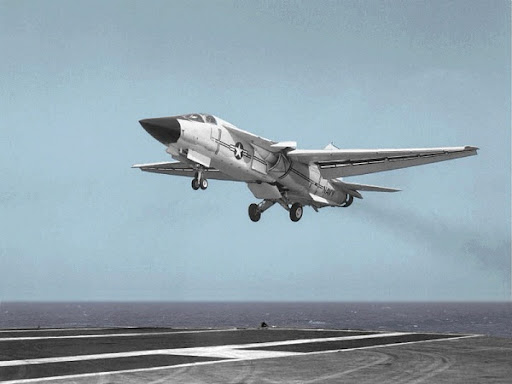
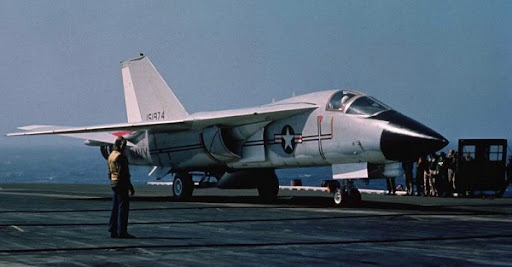

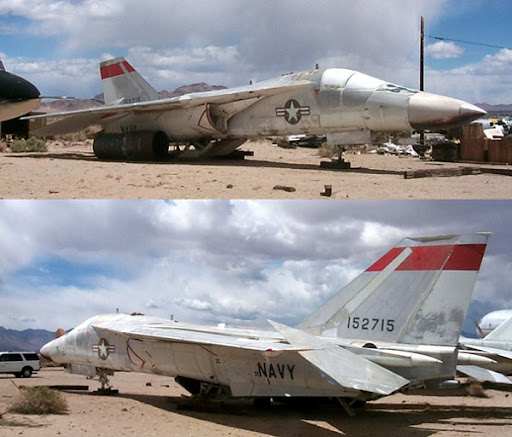
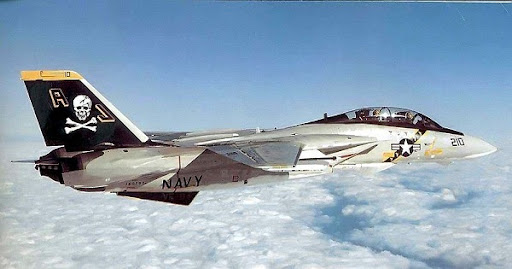






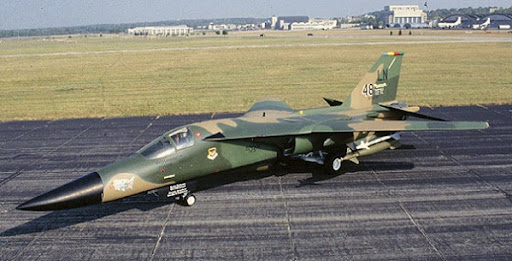
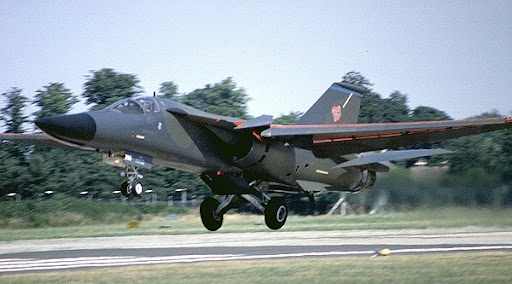



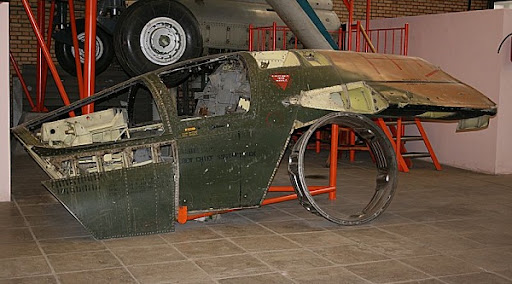


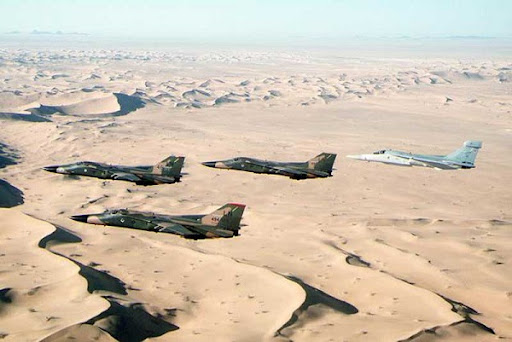
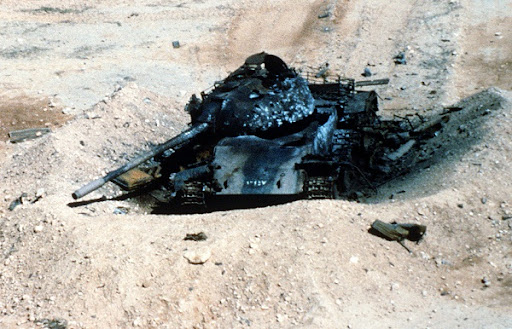


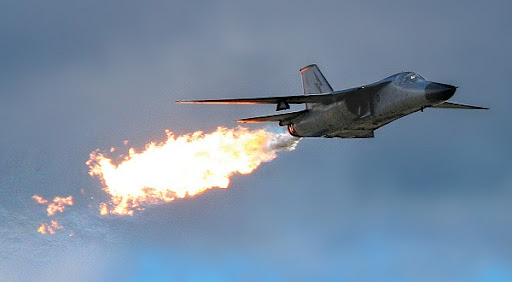

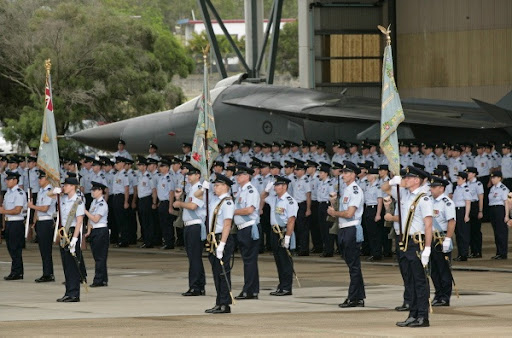
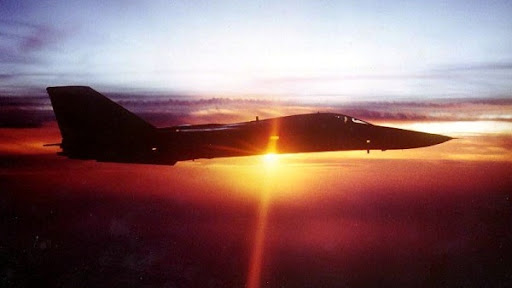
Outstanding post Peter! You've captured the good, the bad, and the ugly of the Varks history; and you are one of the few that even knew the Navy had 7 of them… 🙂 It's too bad GD didn't learn anything on the TF30… It always was a POS engine…
This comment has been removed by the author.
Before leaving Ft. Worth in 1989 I had the privilege of touring the General Dynamics plant. In addition to walking the F-16 production line I was also able to see the F-111G retrofit in progress. Those Aardvarks sure did make the Falcons look tiny!
Another outstanding tour de force, Peter: congratulations, and thanks!
Leatherneck
Another great post! Your readers are blessed by your persistance and willingness to do such extensive research! Many thanks!
I had the privilege of riding along on a KC-135 flight in New Hampshire once that was tasked with refueling a flight of FB-111s (out of upstate New York, I believe). It was a cloudy night, and the -111s had to use radar to get within visual range of the tanker.
Once joined up, we were treated to a spectacular electric show as each plane moved in to refuel. As the boom tip got to within about a foot of the receiving airplane, an electric arc would form and jump between the tip of the boom and the airplane. The boom operator commented on the sparks, and the -111 pilots mentioned that they could hear them! Considering that these sparks were jumping between the fuel nozzle and the receiver, I was glad that there weren't any leaks!
I showed up at Cannon AFB in 1996 to crew F-16s just after the last F-111 was shipped out to the RAAF. Loved watching those EFs fly. Later, we went to Nellis for Red Flag and got to see our old F-111s again, since the RAAF had joined us for the exercise. Thanks for this look at development and procurement of one of our most interesting aircraft.
Peter, thanks for a fun look back at my past! Arrived Cannon June '69. F-111A's arrived later that summer.
Most spent the next several months grounded.
We lost one in training at VanHorn, TX. The crew hung a sign over its empty bay; Buzzards 1
Air Force 0
Col. made 'em take it down.
Big air plane.
A great page, this, to go with a great plane.
Thank you for such a comprehensive post. For the better part of 4 years, I troubleshot/repaired the avionics on the F-111F and ultimately specialized on the ECM systems. It was a thrilling and pride-filled experience to work on this bird. Thank you again for the trip down memory lane.
Former USAF NCO – RAF Lakenheath – 48th TFW
Thanks for the memories! Great job on the videos.
Sgt Hoover
Read _Illusions Of Choice_ by Robert Coulam. It's a dry read as a lot of what he does is based on analytical statistics modeling but there are good descriptions of the problems which beset the program in general and the 111B in particular.
The F-111 has it's origins in the politics of fixed vs. missile nuclear forces of the late fifties and early 60s with Thor entering service at the same time the F-105 was seen as too vulnerable in it's attachment to 10,000ft+ of runway.
Super STOL capability was one of the 111's key design drivers as a means to keep TAC in the nuclear mission which was where all the money was.
The TF30 is dealt with as the 111 was first program in which it was found that the entire turbopath had to be considered as a whole rather than merely designing the engine around X specifications for TSFC and thrust.
Power for the aircraft was always an issue prior to the P-30 and the P-100 on the 111F and this had a great deal to do with how well the jet boarded as low stall margin and long spoolup times made it necessary to run the engines in a higher than necessary throttle regime which in turn fought the jet's native best AOA and glideslope conditions on approach.
The 111B gets several chapters including those which will surprise the reader in showing that the final iteration of the jet was in fact quite capable at boarding, and in fact /passed/ it's carrier suitability trials when flown by Grumman (then active on the competing F-14) testpilots.
The Navy, which had already slyly convinced Congress to cancel the program before the trials even began, lied unrepentantly by saying that the jet didn't board well without CAS coupled in.
This is akin to saying that a Mack Truck doesn't turn well without power steering and none of the Grumman pilots could figure out why that condition was made when other jets (cough, A-5) were far more restrictive in their 'no coupled FLCS = no carrier landing' constraints.
The 111B was also able to come within 3-4 knots of meeting WOD with six Phoenix aboard and was only 20 minutes shy of it's 3hr on-station time at 150nm.
Comparitively, the F-14 was always a squirrely jet to bring aboard (the nickname 'turkey' was not at all flattering as the pilot had to fight dutch roll to maintain directional control on the widely separated stabs as thrust lines while exercising the DLC with his left hand on the throttles and opposite stick to fight the rudder crab).
The Tomcat could neither takeoff nor recover with six AIM-54 and it was never able to come within 50% of it's on station time with even just 4 weapons (TF30-PW-414).
People give the F-111B a bad rap because they are told to by 'Officers and Gentlemen' (OGs, rhymes with Old Guys) who have enormous profit motive to play the parochial politics game on NIH. The Navy was particularly rude in this because they had responsibility for the engine and the avionics package and would not work with GD to get Hughes and Pratt to play ball. Nor would they specify exactly what was necessary to make the F-111B workable, which made JPO staff working sessions enormously frustrating. Until the very last second when the N-1 package of mods was issued and this alone nearly killed the program with requirement ECPs mods.
The truth is always more complex than the dogma and where a well flown F-4S with slats and VTAS could easily take an F-14 in a visual fight, the F-111B was a superior FADF to the Tomcat in the mold of the F6D Missileer.
_Which is what the 111B was spec'd for_.
Not as a hybrid air superiority fighter.
The USN would have been better off waiting for the mid-70s and the LWF competition to spec an F/A-18E/F type replacement for the F-4 rather than as a 'lightweight' fighter/bomber replacement for the A-7 and A-4 which the F/A-18A ended up being.
This would have left the 111B in the USAF program and not submarined the 'Vark as an interdictor before the 111D/111F could be developed.
Unfortunately, the USN saw the USAF moving into the FX (F-15) preliminary specification process and could not get out of the TFX-111B fast enough to start their own competing VFAX, on pure LOMD factored envy.
When The History Of All Things is finally written, it will be noted that the USN gave the 111B a real reaming at a time when the Tu-22 and AS-4/6 was about to make the USN carrier battle group highly vulnerable to standoff nuclear attack.
Thanks for the walk down memory lane. I left a lot of blood, sweat, and tears on those old girls. They were a great platform that remained competitive throughout there service life. I bruised my kidneys on the speed brake entering the main wheel well more times than I care to say. Its hard to believe they have been out of service for so long now.